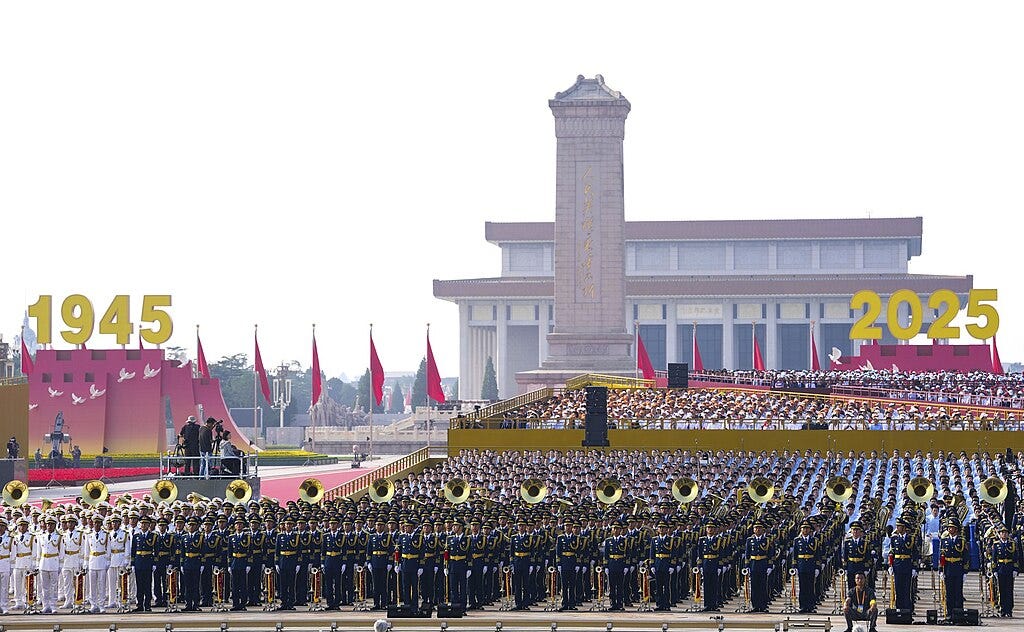Beijing’s Victory Day Parade Flaunts an Axis of Authoritarians
Beijing’s parade with Putin and Kim flaunts authoritarian alignment—symbolism strong, structural durability uncertain.
On the 80th anniversary of Japan’s surrender, Beijing staged a massive military parade through Tiananmen—an unmistakable display of power and messaging. The hardware was eye-catching: hypersonic and nuclear-capable missiles, advanced drones, and high-tech command units. The optics were sharper still: Vladimir Putin and Kim Jong Un flanking Xi Jinping, a tableau of convergence among U.S. adversaries.
Image: “2025 China Victory Day Parade” by President of Russia (Kremlin.ru), licensed under CC BY 4.0
The symbolism is deliberate. China frames the spectacle as historical remembrance and national rejuvenation; the deeper signal is geopolitical—a challenge to the U.S.-led order and a claim to leadership of a different one. Yet this axis is brittle beneath the banners. China wrestles with a slowing economy and demographic headwinds. Russia is mired in an expensive war. North Korea depends on illicit trade and patronage. Alignment born of grievance is powerful, but often temporary.
History counsels caution. Khrushchev’s parades projected power beyond reality—and sometimes lulled the West into either overreaction or complacency. The question now is whether Beijing, Moscow, and Pyongyang can translate spectacle into sustained coordination, or whether fissures widen as interests diverge. Either way, Asia’s security architecture is being contested in full view.
Our Take: Asia’s security order is the contested line. The show of unity masks structural fragilities that could turn solidarity into liability.

